I went to the local release of Tomio Maruyama ruins, Japan's largest circular burial mound, where Japan's largest serpentine sword was excavated

On January 25, 2023, a bronze shield-shaped mirror with a dragon pattern and a serpentine sword were found in the burial facility of the Tomio Maruyama site in Maruyama, Nara City, Nara Prefecture. The bronze mirror is said to be a 'unique item', and the sword is the largest iron sword in Japan and the oldest meandering sword, so it is reported to be
Excavation Survey of Tomio Maruyama Burial Mound (6th) Open to the Public - Nara City Homepage
https://www.city.nara.lg.jp/soshiki/135/164811.html
Japan's largest meandering sword and unprecedented copper mirror unearthed from Tomio Maruyama Kofun! - Nara City Homepage
https://www.city.nara.lg.jp/site/press-release/165641.html
I took the Kintetsu Nara Line Rapid Express from Osaka Namba Station.

Since it had snowed from the night before to the morning, we could see the plains of Osaka beautifully from the window of the train on the way up the mountain towards Ikoma.
Arrive at Gakuenmae Station in about 30 minutes.

Gakuenmae Station has bus terminals at both the north and south exits, but buses to destinations arrive and depart from bus stop number 3 at the south exit.

The nearest is Nara Kotsu Maruyamabashi bus stop. However, on this day, there was a reception desk open to the public on the ground on the west side of the ruins, and the nearest bus stop was Wakakusadai Chuo Bus Stop. The bus that goes through Maruyamabashi and Wakakusadai Chuo is bound for Nara Prefectural General Medical Center, which departs from bus stop number 3 at the south exit of the station. It runs once every hour during the day, but there was a special service that went directly to Wakakusadai Chuo without stopping, so I decided to take this.
Access to the Tomio Maruyama Burial Mound Excavation Site|Nara Kotsu
The fare is 350 yen for both the 28 route and the special service, and transportation IC cards can be used.
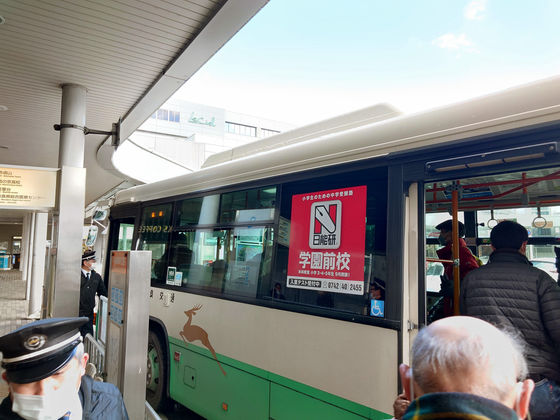
At the rotary entrance of Gakuenmae Station south exit, there was a guide to museums, etc., but there was no notation of Tomio Maruyama Ruins.

Pass the Maruyamabashi bus stop, which is the closest to the ruins themselves.
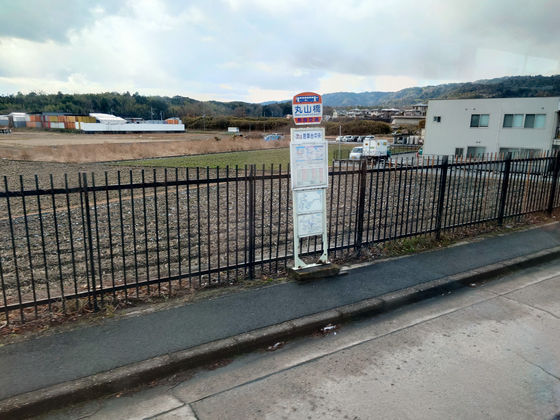
Temporary flight arriving at Wakakusadai Chuo bus stop.
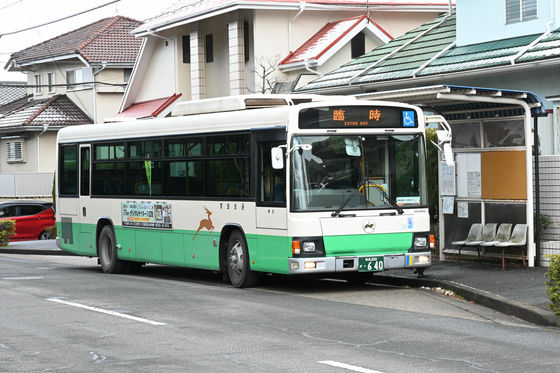
There is a guide like this in the local area, so you shouldn't get lost. The area around the site is residential land and there is no parking lot available, so please use public transportation to visit.
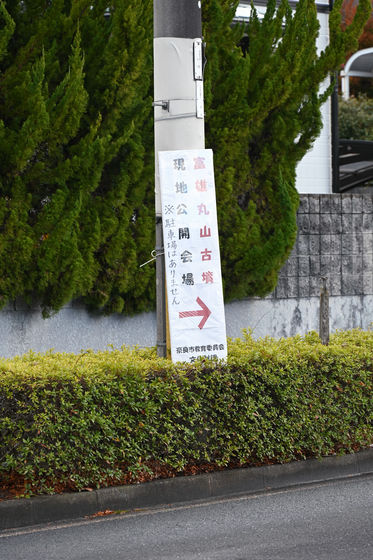
Move according to the instructions.

The ground is the entrance to the site of the Tomio Maruyama Burial Mound.
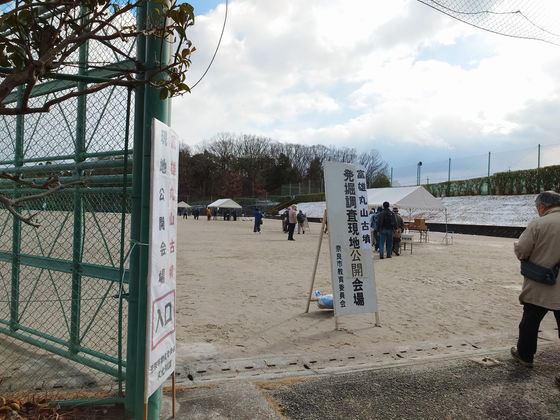
The tortoiseshell-shaped copper mirror and serpentine sword that were excavated are currently being preserved, so they are not on display at the site. Instead, photographs and samples that show the patterns were placed at the site.
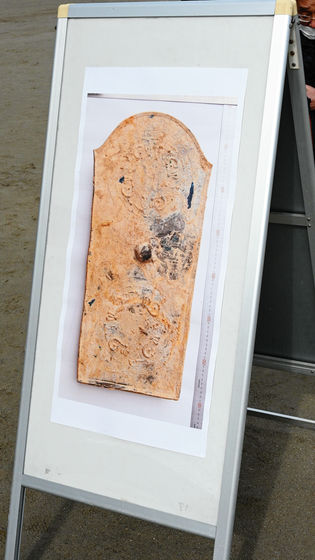
This is a transmission X-ray photograph of a copper mirror.
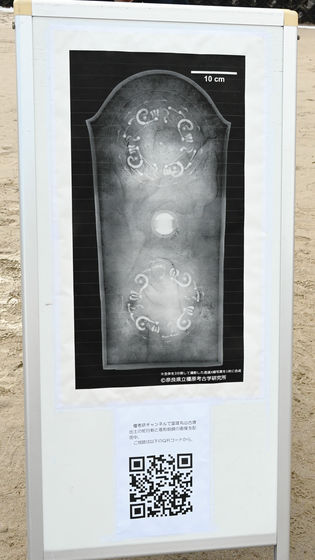
An actual size sample was placed in the tent. The length was about 64 cm and the width was about 31 cm, and it was said that it was leaning diagonally so as to match the covered clay of the lid of the wooden coffin. In the center of the back, there is a knob (protrusion), and on the top and bottom of it are the tortoiseshell patterns seen in Japanese mirrors. In addition to this, there is also a pattern centered on the sawtooth pattern, which is unparalleled as a bronze mirror.
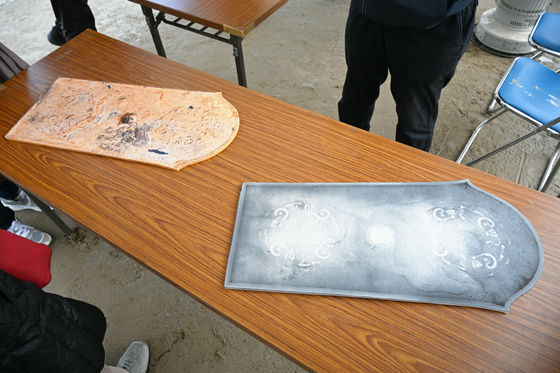
Similarly, a full-scale serpentine sword sample. The length is about 267 cm, for two long desks. The width of the blade is about 6cm. The sheath is partially preserved, and when restored, it is 9cm wide. In addition, it seems that traces of organic equipment remained on the pommel, handle mouth, scabbard mouth, and scabbard butt.
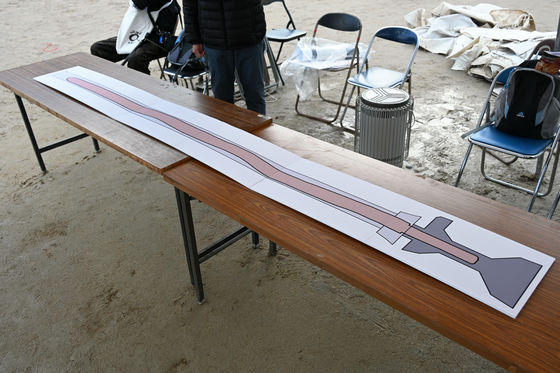
The haniwa is the real thing excavated in this ancient tomb.
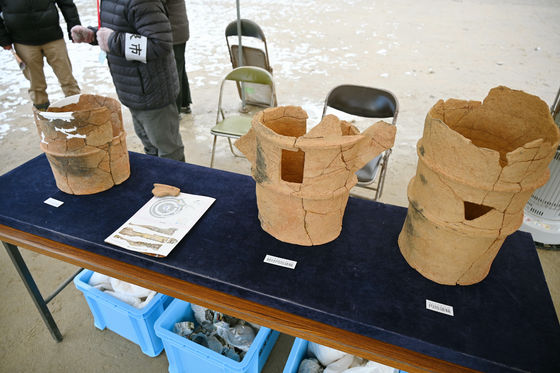
After looking at the exhibits, we will finally proceed to the site from the back of the ground.
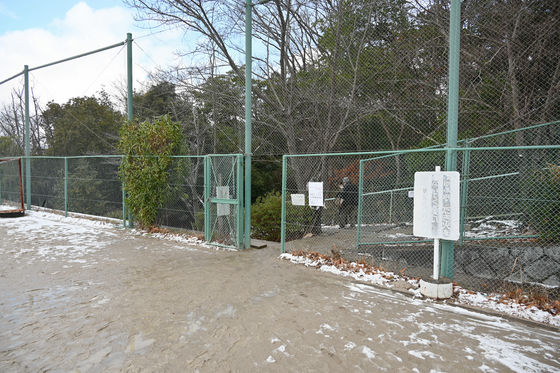
Go down the stairs and move around.
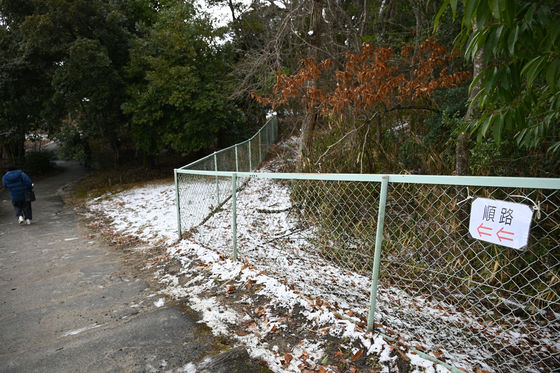
This small hill that is moving around is the burial mound itself.
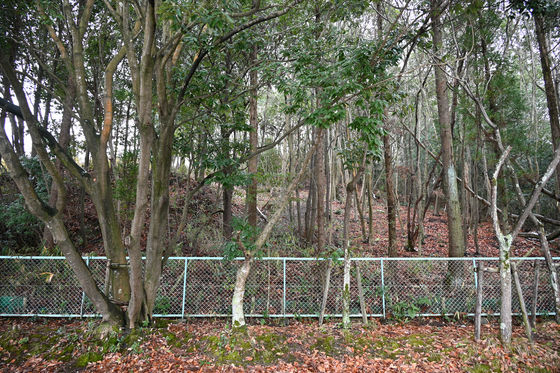
It is estimated that the Tomio Maruyama Burial Mound was constructed in the latter half of the 4th century (the latter half of the early Kofun period). The possibility of a round burial mound with a diameter of around 102m attached to the northeastern part has been pointed out, and a three-dimensional survey using an airborne laser in 2017 revealed that it was a round burial mound with a diameter of around 110m. It turned out to be the largest circular burial mound in Japan, surpassing the Maruhashiyama Kofun (105m in diameter) in Saitama Prefecture.
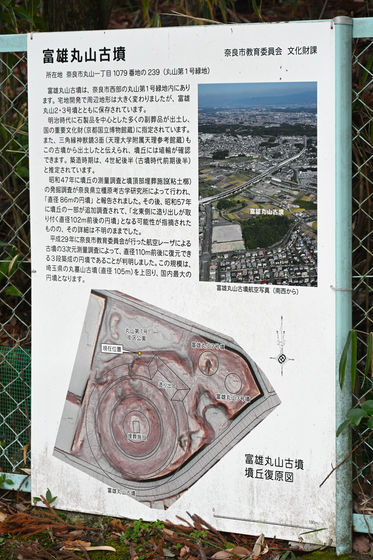
The north side of the burial mound is Maruyama No. 1 Block Park, where swings and other equipment are installed.
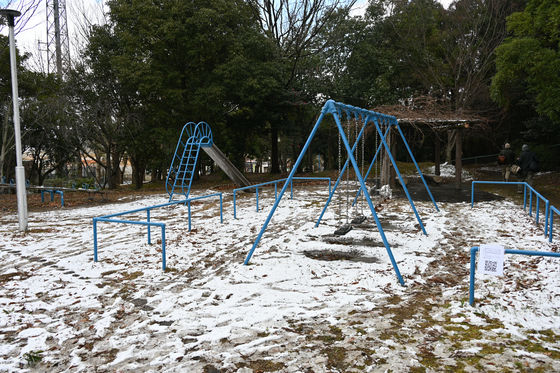
Go around there and climb up again.
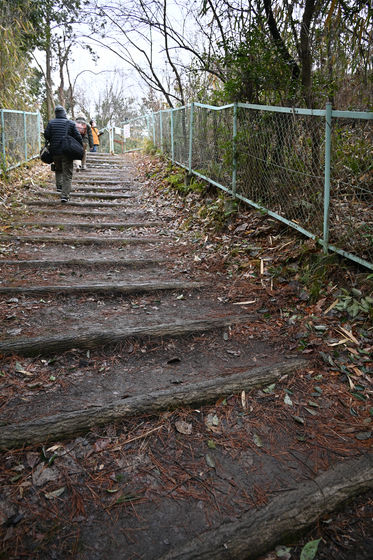
We have arrived at the entrance.
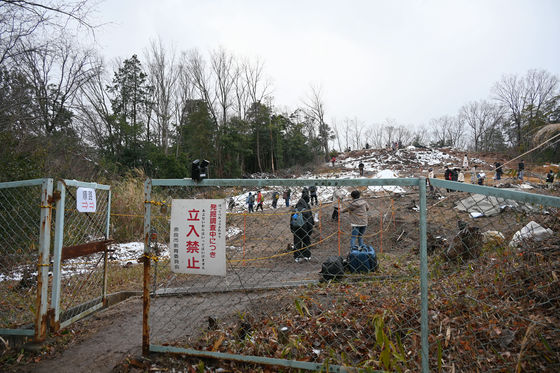
Full view of the Tomio Maruyama ruins. The snow-covered area in the front is the main body of the burial mound, and in the foreground of the photo, the sloped area with many ropes stretched toward the back is the overhanging part called tsukuridashi.
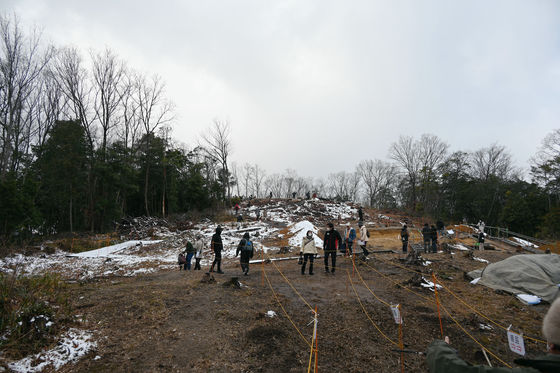
The tour route first goes through the excavation area in the forest on the left hand side, climbs to the top of the hill, and then descends to see the burial facility where the bronze mirror and the sword were found.
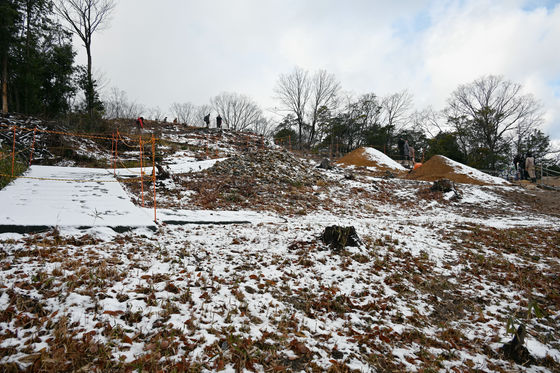
In the Y excavation area in the forest, the foot of the mound, which is the outer edge of the burial mound, can be confirmed. It is said that this was found in roughly the expected position.
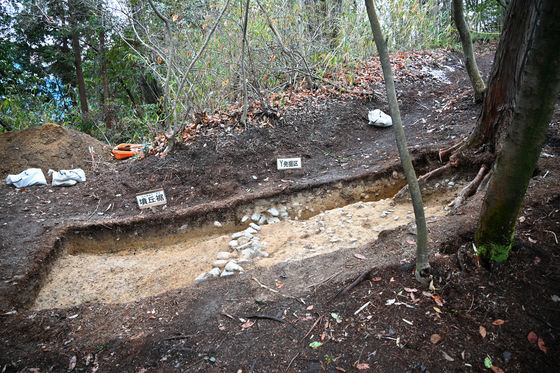
There is a row of haniwa in excavation area X, which is located on the mountain side of excavation area Y, and we were able to see haniwa arranged evenly. This is the first row of haniwa, and although it was thought that there was a second row of haniwa around the W excavation area glimpsed above, it collapsed and the haniwa row could not be confirmed.
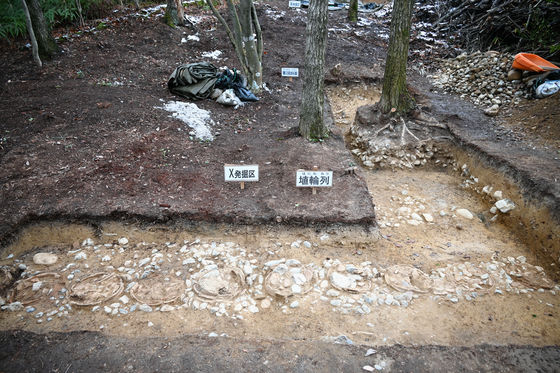
In excavation area U, which is ahead of excavation area X, 'cylindrical haniwa with fins' and 'spring facility type haniwa' were excavated.
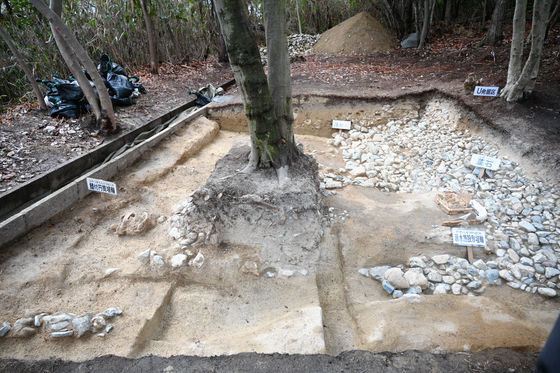
Then climb straight up to the top of the hill.
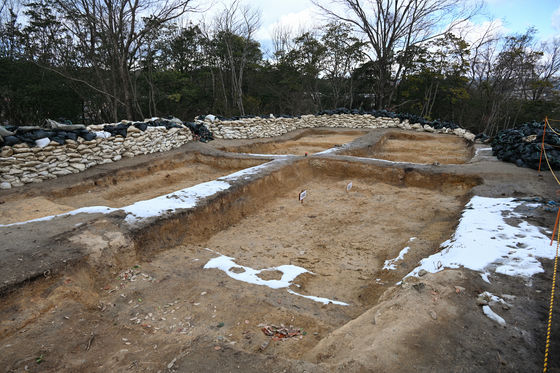
The top of the mound is the A excavation area. Excavations were carried out to confirm whether there were any remains of a terraced structure, but no remains were found.
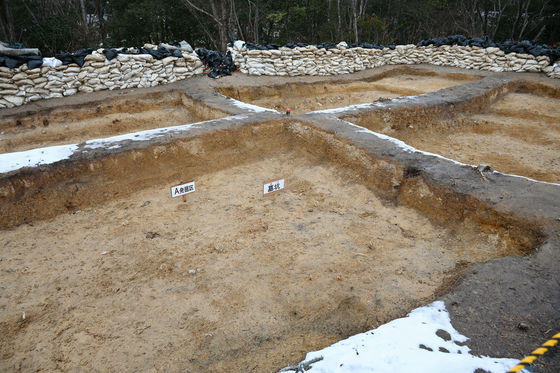
Looking northeast from the top. The overpass that runs in the distance is the Daini Hanna Road.

I'm going down from here.
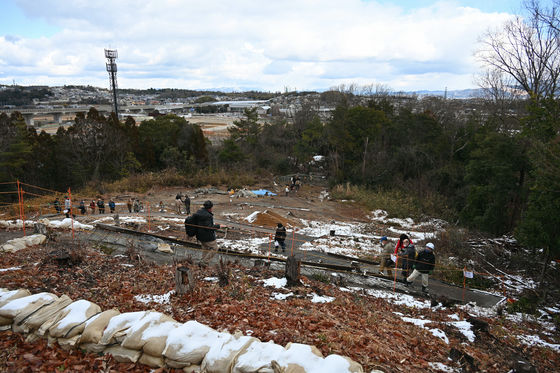
The highlight before going down is the F excavation area. A clay coffin (burial facility) with a length of about 6.4m and a width of about 1.2m was found in a grave pit with a length of about 7.4m, a width of about 3m, and a depth of about 1m. A split bamboo-shaped wooden coffin remains inside the clay coffin, and it is said that a copper mirror and a sword were buried in the covered clay that covered the lid of the coffin.
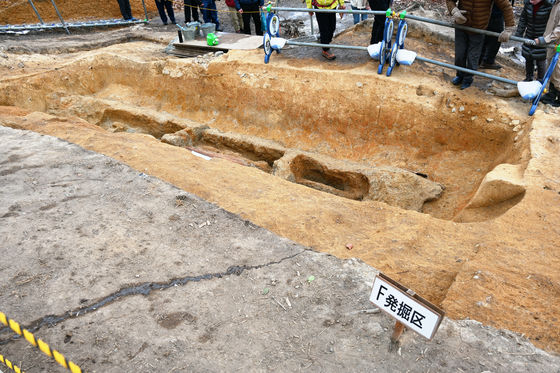
It clearly shows where the bronze mirror and sword were found. In addition, the wooden coffin is not a reproduction, but the excavated one is open to the public as it is.
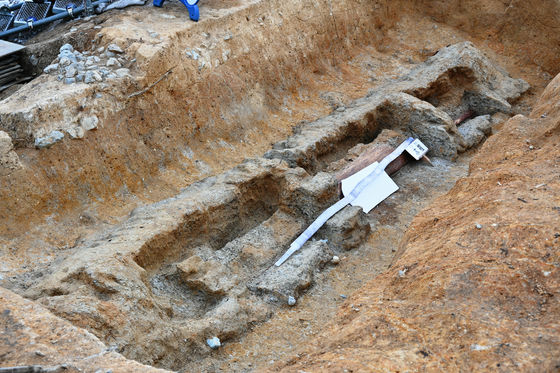
Firm clay mound.

The single pipe barricade installed to prevent it from falling into the grave pit seems to be for the excavation site, and the character was also an excavation specification.
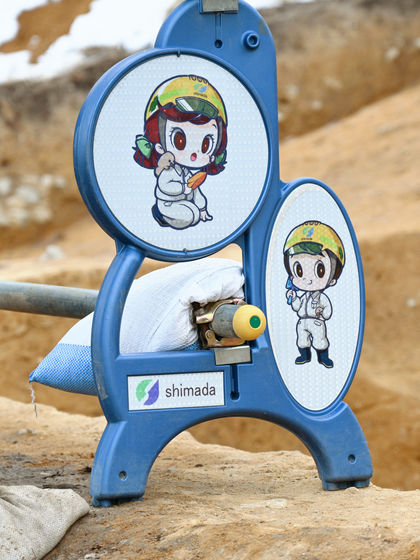
In addition, Tomio Maruyama Tomb No. 2 and No. 3 are adjacent to the Tomio Maruyama Burial Mound on the northeast side.
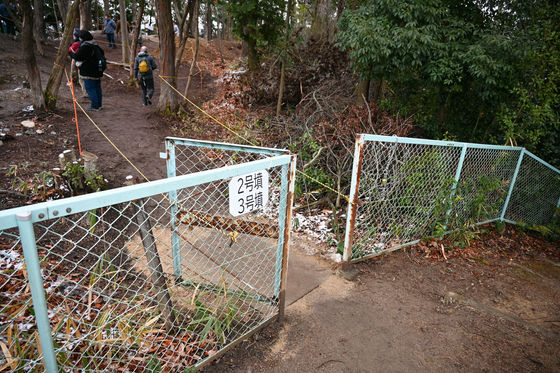
This is Tomb No. 2.
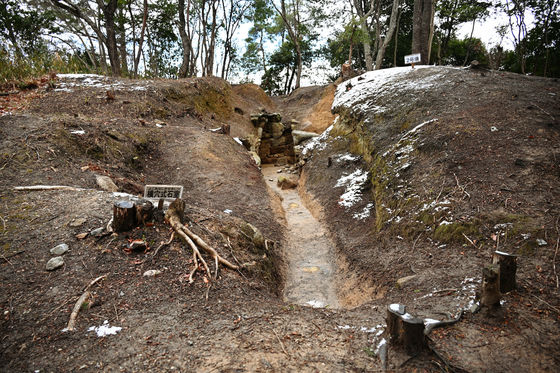
You can clearly see the horizontal stone chamber. It is said to be in the latter half of the 6th century.
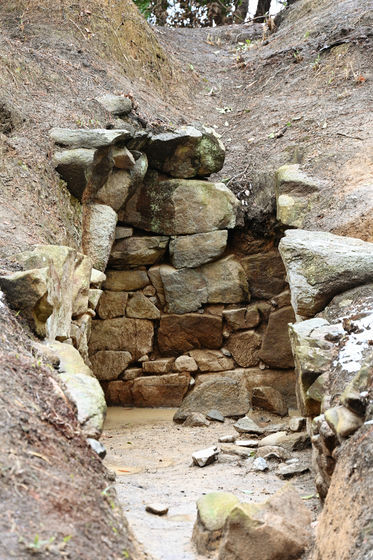
From there, the excavation trail extends to the east.
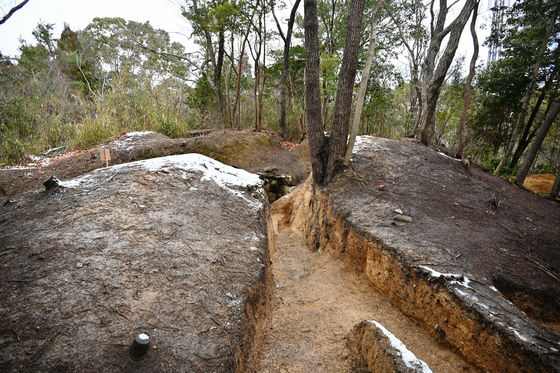
This is Tomb No. 3. However, since no burial facilities were found in Tomb No. 3 and no groove was found separating it from Tomb No. 2, it is possible that Tomb No. 2 and No. 3 formed a single keyhole-shaped tomb. It seems that there is
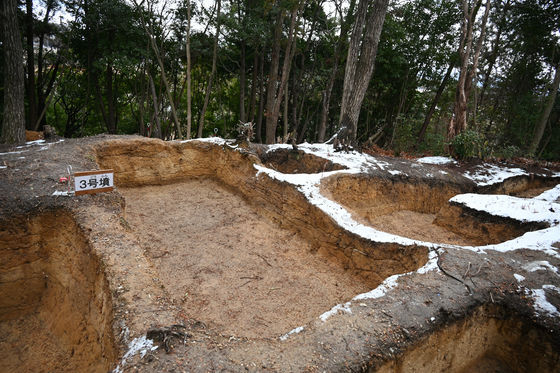
After the tour, it's okay to go back on the same road, but if you continue on the road you came up from Maruyama Block 1 Park without entering the burial mound, you can go down the stairs and go through the road on the south side.

I came back to the bus stop in the center of Wakakusadai.
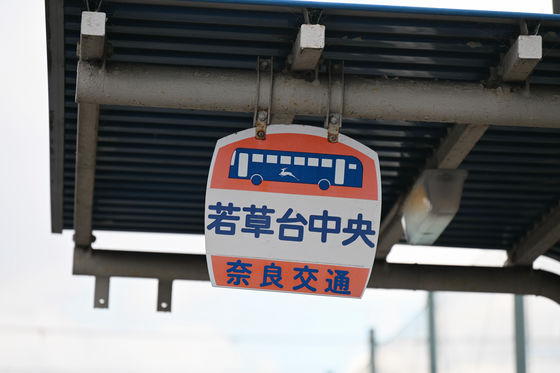
On the way back, the bus to Tomio Station just arrived, so I headed for Tomio Station.
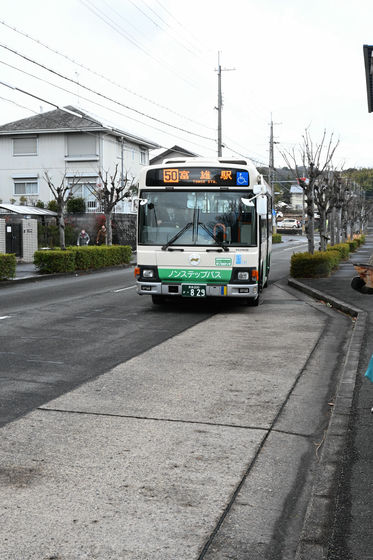
The fare to Tomio station was 370 yen.

Detailed information about the Tomio Maruyama Burial Mound is available on YouTube and the Nara City Video Channel.
Japan's largest round tomb Tomio Maruyama ancient tomb [4K] - YouTube
In the past, it seems that excavation experiences were possible as 'Parent-Child Archeology Experience'.
Recruiting participants for parent-child archeology experience - excavation of Tomio Maruyama ancient tomb!
— Nara City Buried Cultural Property Research Center (@naracity_maibun) November 7, 2022
At the Tomio Maruyama Burial Mound, where research is progressing, you can experience local learning and excavation of the burial mound.
Details → https://t.co/pv9xQwrMl0 pic.twitter.com/qR1W5IrWoP
Related Posts:







